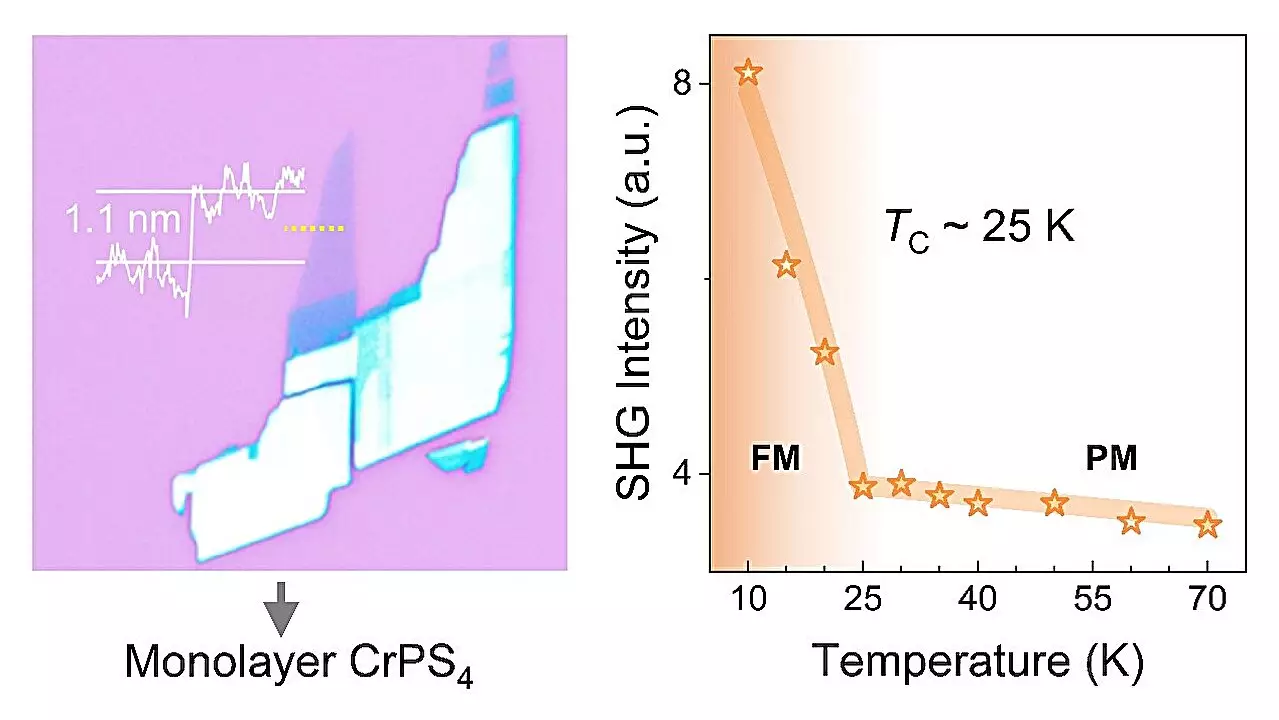In a recent study conducted by Professor Sheng Zhigao and his research team at the Hefei Institutes of Physical Science of the Chinese Academy of Sciences, a remarkable discovery was made regarding the nonlinear magnetic second harmonic generation (MSHG) induced by the ferromagnetic order in monolayer CrPS4. This groundbreaking observation sheds light on the previously unexplored nonlinear optical properties of two-dimensional van der Waals materials.
Second harmonic generation (SHG) is a nonlinear optical effect that is sensitive to symmetry breaking in materials. Traditionally, SHG has been observed in crystals with broken symmetry (i type), but its occurrence in magnetic systems (c type) has been limited by its weaker signal strength. This has hindered the potential use of magnetic materials in optoelectronics.
The Research Findings
The research team’s investigation into the magnetic order-related SHG effects in monolayer CrPS4 revealed a significant c type SHG effect induced by ferromagnetic order. Surprisingly, this effect was observed in odd-layered CrPS4, while bulk and even-layered CrPS4 did not exhibit the same response. This unique observation marks the first instance of ferromagnetic order inducing c type SHG effects in a 2D magnet under the electric-dipole approximation.
The implications of this discovery are profound, as the ferromagnetic order induced c type SHG was found to have a signal strength comparable to that of i type SHG, which arises from the breaking of crystal structural symmetry. This rare occurrence challenges existing notions about the limitations of nonlinear optical effects in magnetic materials and opens up new possibilities for the development of advanced optoelectronic devices.
The research led by Professor Sheng Zhigao has uncovered a new frontier in the field of nonlinear optical properties of two-dimensional van der Waals materials. By identifying the strong nonlinear magnetic second harmonic generation induced by ferromagnetic order in monolayer CrPS4, the research team has provided valuable insights that have the potential to revolutionize the way we utilize magnetic materials in optoelectronic applications. This discovery serves as a testament to the importance of exploring uncharted territories in scientific research and pushing the boundaries of our understanding of material properties.


Leave a Reply